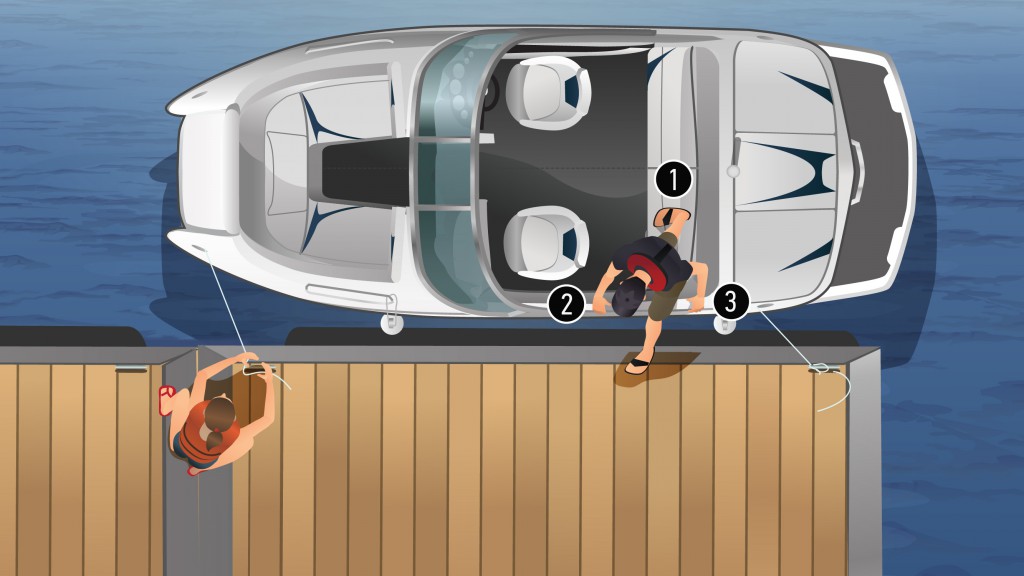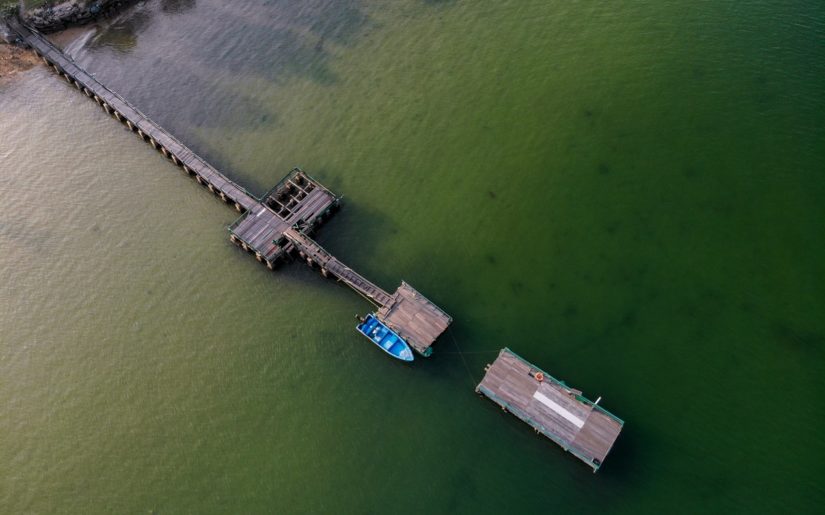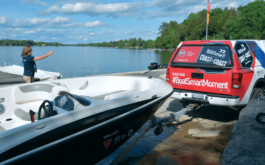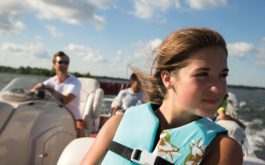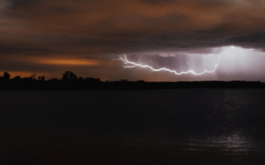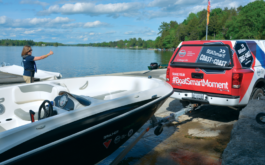Boat Docking Procedures
Just like parking your car in a busy parking lot, docking your boat at a busy marina presents opportunities for your boat to get damaged. Additionally, the weather conditions will have an effect on your docking procedure—wind and current in particular.
To cast off or to return to the dock safely, consider these four factors:
- Direction of the wind and/or current—is it with or against your direction of travel?
- Size of your boat and space at the dock—is there enough room for you to dock safely?
- Depth of the water—make sure the docking area is deep enough for your boat’s draft.
- Amount of traffic in the area. Are there other boats or swimmers around?
Casting Off From the Dock
How to Cast Off – Step by Step
- Make sure your passengers are properly seated with their hands and feet inside the boat.
- If your boat is equipped with enclosed engine compartments, operate the ventilation system (blower) for at least four minutes before starting the engine.
- Start the engine. If you’re operating a personal watercraft, make sure that the kill switch (safety lanyard) is securely attached to your wrist or life jacket at all times.
- Check your surroundings for any obstacles or other boats.
- Untie the mooring lines and push your boat away from the dock. As you leave the dock, the stern of your boat will likely swing back toward the dock—push your boat away from the dock at both the bow and stern. Be careful if the wind is pushing your boat toward shore. You may need to operate in reverse, angling the stern away away from the dock before pulling away, to avoid colliding with the dock.
- Proceed slowly from the dock until it’s safe to increase your speed.
- Accelerate slowly. Rapid acceleration may cause passengers to lose their balance.
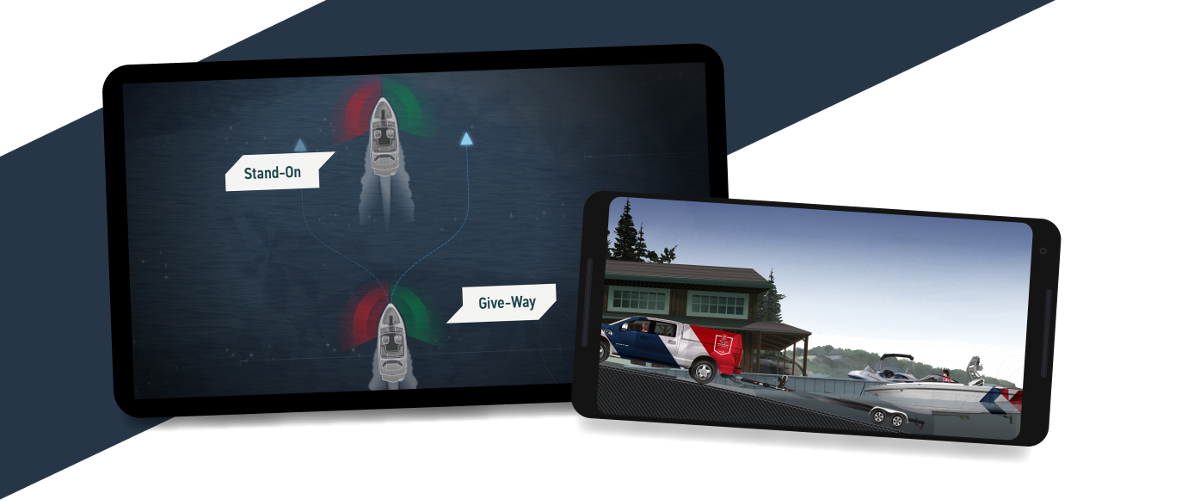
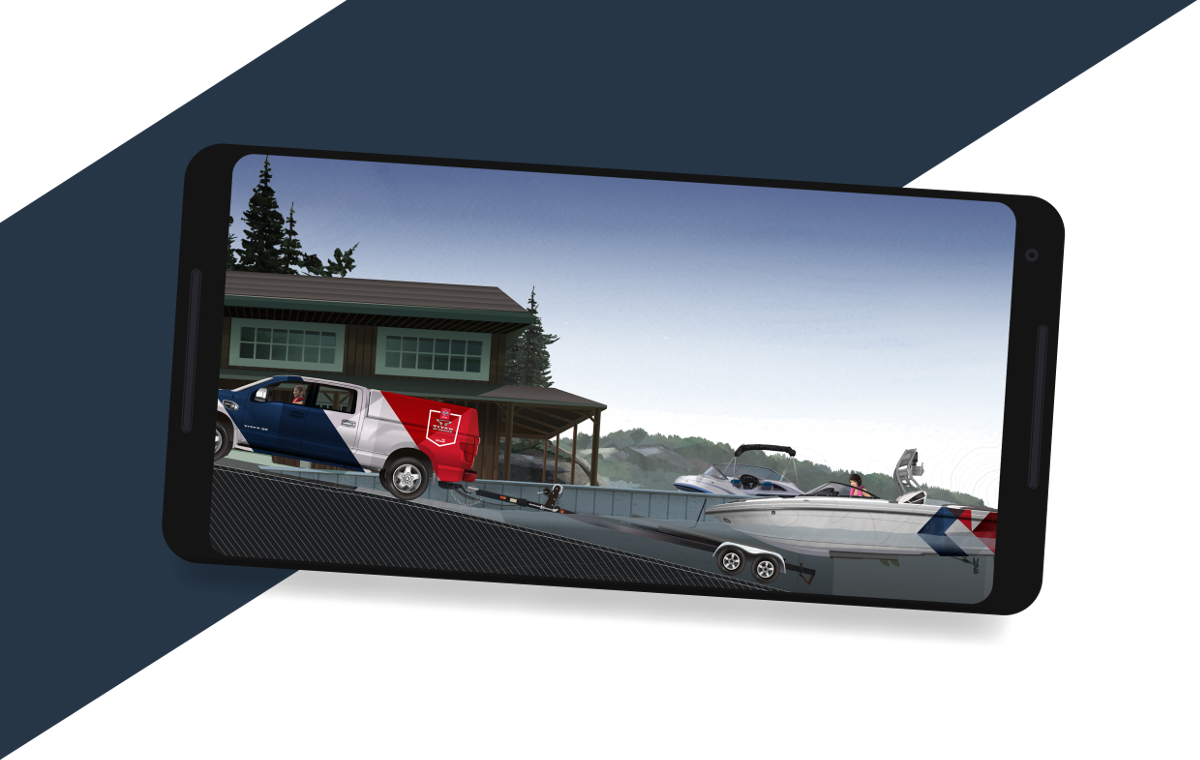
Get your Official North American
Boating License
The Official NASBLA and Transport Canada Boating Course, Test & License.
Get your Official North American
Boating License
The Official NASBLA and Transport Canada Boating
Course, Test & License.
Returning to the Dock
Returning to dock – step by step
- Ensure all passengers are seated securely with their feet and hands inside the craft.
- Then, use the wind or current, as appropriate to the conditions:
- If there is no wind or current: Turn your boat slowly as you approach the dock at a 45° angle in order to come to a parallel resting position. Operate in reverse to control the position of your boat. if necessary.
- If the wind or current is pushing your boat toward the dock (onshore wind): Approach the dock slowly at a 10° to 20° angle (you want the boat to drift toward the dock).
- If the wind or current is pushing your boat away from the dock (offshore wind): Approach the dock at a manageable speed and at an angle steeper than 45° (the angle of approach is steeper when the wind or current is stronger). Remember that your boat does not have brakes and will require a minimum distance to come to a stop. The stopping distance will also vary depending on speed, load, wind and water conditions.
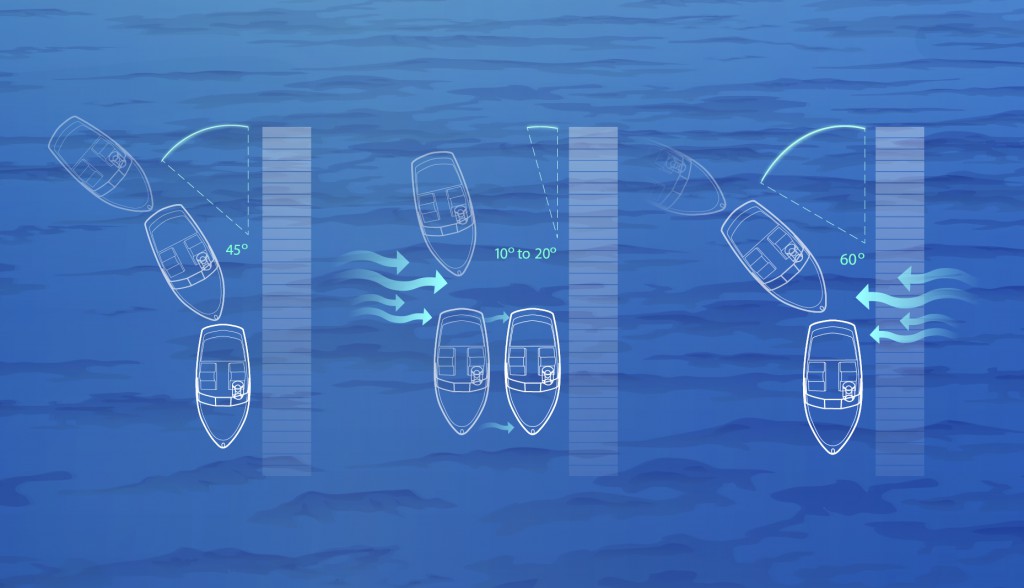
Memory Tip: There are four key factors to keep in mind when you’re docking your boat:
- Preparation
- Traffic
- Wind
- Current
Here’s a helpful reminder—the acronym for these words (PTWC) is the same as this memorable sentence: ‘Position The Water Craft’.
Getting off your boat
When disembarking from your boat, consider the following tips to be sure that you and your passengers are safe:
- Secure the craft
- Shut down the motor
- PWC operators should remove the engine shut-off cord from the PWC to avoid accidental starting
- Securely fasten the boat or PWC to the dock
- Unload passengers one at a time
- PWC operators should be aware that as each passenger exits the watercraft it may become unstable, and passengers should attempt to keep their weight distributed as they disembark.
- Remember: Never jump from the boat to the dock.
